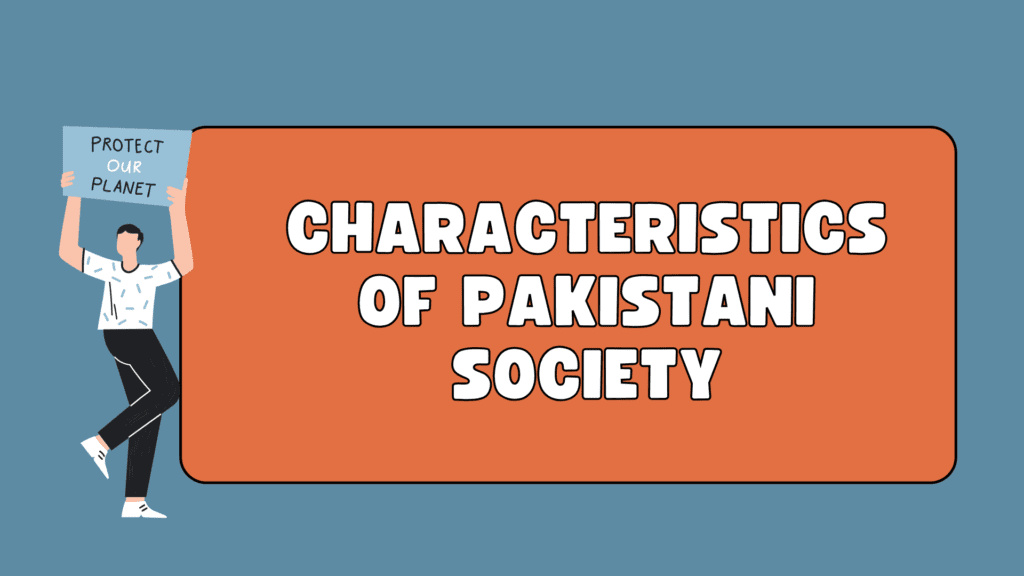1. Poverty
Poverty remains one of the most pressing social issues in Pakistan. It affects a significant portion of the population, particularly in rural areas, slums, and marginalized communities. According to the Pakistan Bureau of Statistics and various independent surveys, nearly one-third of the population lives below the national poverty line. The root causes of poverty in Pakistan are multifaceted, including rapid population growth, political instability, unemployment, low levels of education, and inflation. A significant challenge is the unequal distribution of wealth, where a small elite controls the majority of the country’s resources while millions struggle to afford basic necessities such as food, clean water, housing, education, and healthcare. Poverty has wide-reaching consequences, including malnutrition, child labor, school dropouts, and increased susceptibility to crime and drug use. The lack of access to social safety nets further aggravates the condition of the poor. Although there are government programs like the Benazir Income Support Program (BISP), their reach and effectiveness are often limited by corruption, mismanagement, and lack of transparency.
2. Unemployment
Unemployment, especially among the youth, is another critical issue in Pakistan. Every year, thousands of students graduate from universities and colleges, but the job market is unable to absorb them due to limited industrial growth, a stagnant economy, and political uncertainty. The unemployment rate fluctuates but remains high, particularly among educated youth. This mismatch between education and market demand also contributes to the problem, as many young people lack the technical or vocational skills needed for available jobs. The consequences of unemployment are serious—it fuels frustration, depression, and a sense of hopelessness among the youth, which can lead to anti-social behaviors, brain drain (migration of skilled individuals), and even extremism. Unemployment also weakens the economic growth of the country by underutilizing its human resources. Addressing this issue requires long-term investment in education reform, industrial development, and promotion of entrepreneurship through access to credit and training.
3. Illiteracy
Illiteracy is one of the root causes of many other social problems in Pakistan. Despite various efforts, the literacy rate hovers around 58–60%, and the situation is worse among women and rural populations. Illiteracy leads to low awareness, poor decision-making, and limited access to better employment opportunities. Many children are either out of school or drop out early due to poverty, lack of schools, and cultural restrictions, especially for girls. In many parts of the country, education is not seen as a priority, and the quality of government-run schools is often very poor due to outdated curricula, untrained teachers, and lack of facilities. Illiteracy also affects public health, democratic participation, and social mobility. Without significant investment in education—especially in infrastructure, curriculum modernization, and teacher training—Pakistan cannot hope to improve its socio-economic indicators.
4. Gender Inequality
Gender inequality is deeply entrenched in Pakistani society and affects women in almost every aspect of life. From limited access to education and healthcare to discrimination in the workplace and politics, women in Pakistan often face systematic marginalization. In many areas, girls are not sent to school or are married off at an early age. Even in urban centers, women face wage discrimination and limited career opportunities. Domestic violence, honor killings, and lack of reproductive rights further reflect the severity of gender-based disparities. Although laws exist to protect women—such as the Protection against Harassment of Women at the Workplace Act and laws against domestic violence—implementation remains weak due to cultural norms and societal resistance. Empowering women through education, legal reforms, and socio-economic inclusion is vital for the country’s progress.
5. Child Labor
Child labor is a widespread problem in Pakistan, especially in the informal sector. Millions of children are engaged in work that deprives them of education, play, and a healthy childhood. These children can be seen working in brick kilns, workshops, tea stalls, homes, and agriculture. The main driver of child labor is poverty—when families cannot meet basic needs, children are forced to contribute to household income. Another factor is the lack of free and quality education. Employers often prefer child workers because they are cheap and less likely to demand rights. The effects of child labor are devastating: children grow up without education, face health risks, and are often subject to exploitation and abuse. Although Pakistan is a signatory to various international conventions against child labor, enforcement of laws is weak, and there is little social pressure to bring change. Eradicating child labor requires a combination of poverty alleviation, awareness campaigns, and strong educational reforms.
6. Corruption
Corruption permeates nearly all sectors of Pakistani society—from bureaucracy and police to the judiciary and political institutions. It hampers development, erodes trust in government, and discourages foreign investment. Public officials often misuse authority for personal gain, and bribes are considered a routine part of getting things done in government offices. The mismanagement of public funds and lack of transparency in mega projects have also led to significant losses. Corruption directly affects the delivery of public services, including education, health, and infrastructure. The National Accountability Bureau (NAB) and other anti-corruption bodies have taken steps to address this issue, but political interference, weak institutional frameworks, and selective accountability have limited their effectiveness. True reform requires a strong political will, an independent judiciary, and active civil society engagement.
7. Terrorism and Religious Extremism
Terrorism and religious extremism have plagued Pakistan for decades, costing thousands of lives and damaging the country’s economy and global image. The roots of extremism lie in a combination of factors, including poor governance, illiteracy, misuse of religious teachings, and external influences. Militant groups have exploited religious sentiments and socio-economic deprivation to recruit individuals. The state has at times failed to take consistent action against these groups, further complicating the situation. The military operations (e.g., Zarb-e-Azb, Radd-ul-Fasaad) have helped curb terrorism to an extent, but the ideological roots remain. Schools and madrassas need to promote tolerance, critical thinking, and peace. National Action Plan (NAP) must be fully and fairly implemented to root out extremist ideologies from all levels of society.
8. Population Explosion
Pakistan’s population has been growing at an alarming rate, with over 240 million people as of 2025. This population explosion places a massive burden on the country’s limited resources. The effects are visible in overcrowded cities, pressure on healthcare and education systems, water and food scarcity, and rising unemployment. The growth rate is due to early marriages, lack of awareness about family planning, and religious taboos against contraception. Large families often result in malnourished children, illiterate adults, and increased dependency ratios. The government has introduced population control policies and health services, but cultural resistance and lack of outreach have limited their success. A multi-pronged approach involving education, healthcare services, and community-level advocacy is essential.
9. Drug Addiction
Drug addiction is a growing public health crisis in Pakistan. Millions of individuals, particularly youth, are addicted to narcotics such as heroin, hashish, crystal meth (“ice”), and prescription drugs. The easy availability of drugs, lack of recreational outlets, unemployment, and peer pressure have contributed to the spread of addiction. Drug addiction not only destroys the physical and mental health of individuals but also has broader social impacts such as broken families, increased crime, and workplace inefficiency. Rehabilitation centers are few, and there is significant social stigma attached to seeking help. A national strategy involving awareness campaigns, school education, treatment centers, and stricter law enforcement is urgently needed.
10. Water Scarcity
Pakistan is now among the countries facing severe water stress. Per capita water availability has dropped drastically over the past decades due to mismanagement, wastage, and lack of water storage infrastructure. Climate change has worsened the problem with unpredictable rainfall and melting glaciers. The agriculture sector, which uses over 90% of the country’s water, is highly inefficient. Urban areas face water shortages, especially in summers, while rural areas often rely on unsafe water sources. The lack of clean drinking water contributes to diseases like diarrhea, hepatitis, and typhoid. Building new reservoirs, adopting modern irrigation techniques, treating wastewater, and public awareness on water conservation are necessary steps to avoid a crisis.

